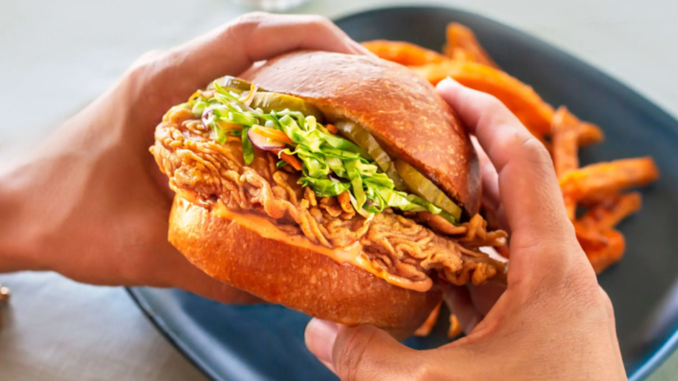
By Jeff Zabin, Restaurant Technology News - 4.9.2023
Lab-grown meat is on the cusp of becoming a major milestone in the United States. The U.S. Food and Drug Administration (FDA) has cleared two American producers of lab-grown meat to bring their products to market, and regulators from the U.S. Department of Agriculture (USDA) are deciding how to label and inspect the facilities that produce them. The guidelines are expected this year, and once they are in place, lab-grown meat can hit store shelves and restaurant menus.
The process of cultivating meat or cultured-cell meat is grown in steel bioreactors from animal stem cells that are fed a mixture of vitamins, fats, sugars, and oxygen. The process results in real meat tissue without having to raise or slaughter an animal. Advocates say that the technique has the potential to dramatically curb greenhouse gas emissions from traditional animal farming, which requires vast swaths of land, water, and antibiotics for disease control.

ABC News was recently granted an inside look at the nation’s first and largest cultivated chicken facility run by UPSIDE Foods in an office park outside San Francisco. The facility costs $50 million, and UPSIDE Foods can produce 50,000 pounds of cultivated chicken a year using current technology. Uma Valeti, the founder and CEO of UPSIDE Foods, said that UPSIDE will need significant additional investment to scale up to 400,000 pounds a year, but that’s the goal.
While UPSIDE Foods and GOOD Meat, the second FDA-approved cultivated meat company, produce chicken, dozens of other start-up companies are preparing to produce and sell cultivated beef, lamb, pork, and seafood from animal cells. Animal agriculture is responsible for at least 14.5% of greenhouse gas emissions worldwide, according to the U.N. Food and Agriculture Organization, nearly equivalent — by some estimates — to the share of emissions produced by cars, trucks, trains, airplanes, and ships combined.
Mosa Meat from the Netherlands and Believer Meats from Israel are among the other cultivated meat companies currently in discussions with the FDA. Renowned chefs like Francis Mallmann from Argentina and José Andrés from Spain have already committed to featuring the meats in their upscale restaurants.
According to recent research published by foodtech company SuperMeat, and conducted by Censuswide, an independent market research consultancy, 86% of chefs across America, spanning fine dining to fast food, are interested in serving cultivated meat or poultry while 84% of chefs would consider replacing traditional meat with cultivated meat or poultry on their menus, if pricing were similar. 77% of chefs would be willing to pay a premium for cultivated meats and poultry due to its benefits, most importantly food safety and environmental friendliness – in fact, two thirds of chefs are willing to pay an 11-15% markup. According to the company, chefs are most interested in trying cultivated poultry compared to other meat at 51%, followed by cultivated beef at 38%.

Lab-grown meat has drawn billions of dollars in investment. For its part, UPSIDE has attracted high-profile financing from Bill Gates, Richard Branson, and Whole Foods founder John Mackey. President Joe Biden has also thrown support behind the effort, signing an executive order in September directing the Department of Agriculture to support “cultivating alternative food sources.”

Animal rights advocates say “no-kill” meat is also a way to reduce suffering and alleviate concerns about unethical treatment of animal populations on large commercial farms. Critics contend that cultivating meat is an enticing prospect but remains little more than a novelty.
While there are concerns about the financial viability of the industry relative to long-term output, advocates and investors say cultivating meat has the potential to dramatically supplement and expand the world’s existing food supply. As demand for meat products continues to soar globally, the technique has the potential to fill the delta between how much meat we eat now and how much we’re going to have to produce for the next 30 years, said Valeti.
The USDA is currently deciding how to label cultivated meat for public sale and inspect facilities that produce it. The guidelines are expected sometime this year, a final hurdle before the products can begin to appear on restaurant menus in the United States.
Related: How Cultured Meat Technology Will Change Restaurant Menus for the Better

